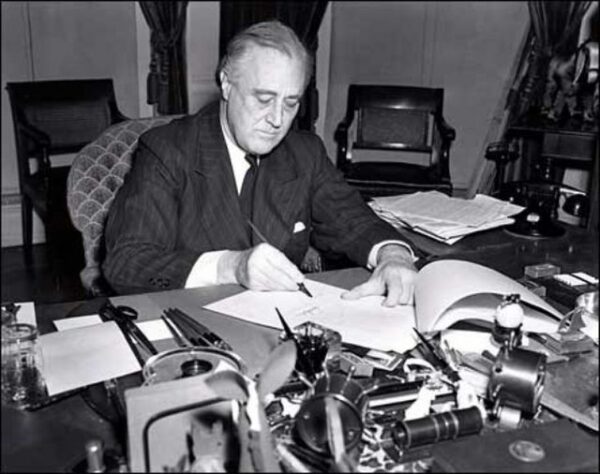The Lend-Lease Act, enacted by the United States on March 11, 1941, marked a significant shift in the nation’s foreign policy leading up to its direct involvement in World War II. This landmark legislation was a pivotal step in providing military and economic assistance to the Allied nations, a move that ultimately played a crucial role in reshaping the dynamics of the conflict.
As World War II unfolded, the United States found itself in a position of cautious neutrality. While sympathetic to the plight of the Allied powers, particularly Britain and the Soviet Union, the U.S. was constrained by its commitment to avoiding direct involvement in the war. The Lend-Lease Act, proposed by President Franklin D. Roosevelt, provided a legal framework to circumvent this neutrality by authorizing the lending or leasing of war materials to nations deemed vital to the defense of the United States.
The primary objective of the Lend-Lease Act was to bolster the war effort of nations fighting against Axis powers, primarily Nazi Germany and Imperial Japan. This assistance was not limited to traditional loans; instead, it encompassed the transfer of a wide array of materials, including military equipment, munitions, food, and other supplies essential for the war.
The phrase “Arsenal of Democracy,” coined by President Roosevelt in a radio address in December 1940, encapsulated the envisioned role of the United States in providing the necessary tools for its allies to withstand the onslaught of the Axis forces. The Lend-Lease Act became the legislative embodiment of this idea, reflecting a departure from the traditional isolationist stance that had characterized American foreign policy.
The scope of the Lend-Lease Act was vast, with billions of dollars allocated for aid to the Allies. The initial recipients included the United Kingdom, China, and the Soviet Union. The aid extended beyond tangible goods, as the United States recognized the importance of supporting its allies in their struggle against aggression.
The implementation of the Lend-Lease Act was not without controversy. Isolationists in the United States opposed the measure, arguing that it could entangle the nation in the conflict. However, the dire circumstances of the war and the growing understanding that a defeat of the Allies would have profound implications for global stability helped garner support for the legislation.
The impact of the Lend-Lease Act was profound. It provided a lifeline to nations facing the brunt of Axis aggression, allowing them to sustain their resistance and continue the fight. The aid facilitated by Lend-Lease played a crucial role in turning the tide of the war, especially on the Eastern Front, where the Soviet Union received substantial assistance in its battle against Nazi forces.
The Lend-Lease Act not only reshaped the geopolitical landscape but also marked a transformative moment in U.S. foreign policy. It laid the groundwork for increased international involvement, foreshadowing the nation’s emergence as a global superpower in the post-war era.






